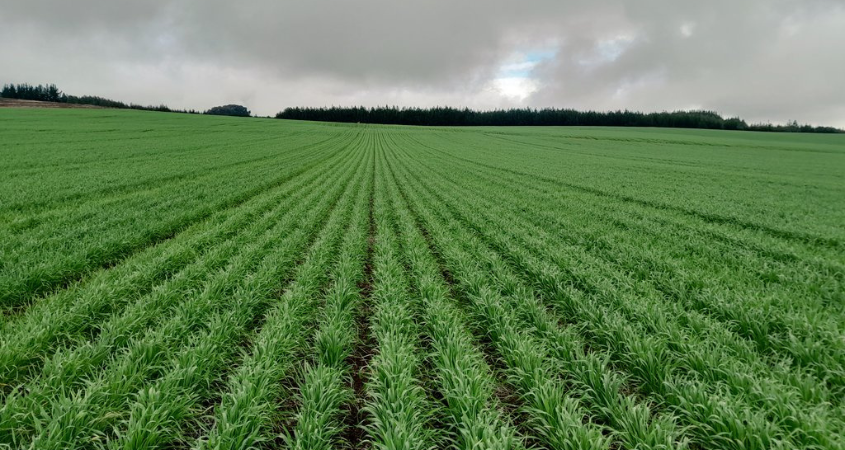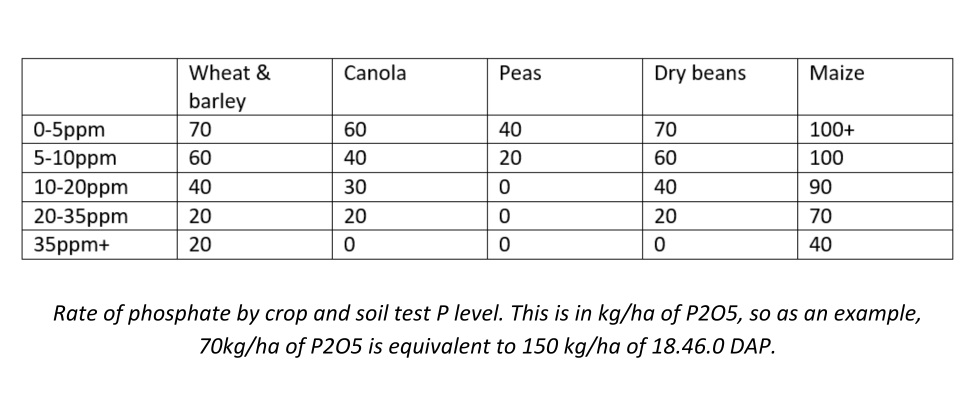
You have chosen your favourite variety, prepared the soil and are ready to plant. Hopefully you have examined the soil structure and taken action to remedy any compaction or structural issues, now you just need to load the planter with seed…. and fertiliser.
One of the most important things you can do is take a soil test to make an informed decision about what nutrients you need for your crop. Do not be misled into thinking that a ‘specially formulated fertiliser’ will cover all of the divergent soils across Kenya, it will never be appropriate for every soil.

All soils and crop requirements are different, so it is important to look at blocks or fields on an individual basis, starting with local knowledge and a soil sample.
The first thing that I look for in a soil test is the pH. This is a huge topic that we have looked at previously in Think Agronomy, but as a general rule if you are below pH 6 you need to seriously think about liming. Below pH 5 and you have a serious problem that will likely take a few years to correct. Having said that, I am constantly surprised at how little benefit we see from liming at soils down to pH 5.5 even after several years.
Phosphorus is the second nutrient I look at because it is generally very low across Kenyan soils, but also because if you get it wrong at planting it is impossible to remedy later on (foliar P sprays are very rarely effective – I cannot think of many examples where I have seen a clear advantage in 15 years). The table below is a rough, but reasonable guide based on actual trials to determine crop response to Phosphate.

Potassium is a real enigma. We do not know how spoilt we are in Kenya with our high potassium levels. For perspective 300-400ppm is considered very high in many European or North American soils – I have never seen a soil test as low as this here! Some soils in Trans-Nzoia on the coarse sands are lower in K, but not at levels that you are likely to see a benefit from K.
Magnesium is an element that is often forgotten. I use the rule that if the soil test is below 200ppm, I apply 50-100kg/ha of magnesium sulphate at planting. At 2-300ppm, a few foliar sprays is sufficient. If you are buying a fertiliser containing magnesium, you need around 7kg/ha of magnesium oxide as a minimum on a <200ppm soil, so check how much the compound is actually supplying you.
This leads on to sulphur, which is one of the more complex nutrients and I have dealt with this in greater detail in previous newsletters. My advice is to apply some sulphur, in the sulphate form so that it is readily available, and to be mindful of leaching in heavy rain in crops with small roots. Sulphur is very mobile in the soil so little and often is sensible and a total of 8-10kg/ha of S (20-25kg/ha SO3 if the bag quotes sulphate) is usually adequate.
The soil test will also give advice on trace elements such as copper, zinc and boron, so remember to specify the intended crop when you send a sample off to a lab so that they are able to provide guidance specific to that crop.
Finally, when I receive soil tests I always record them in a folder for future reference and study the trend over previous results. One such trend is soil acidity, which on the farms I advise on is unchanged over the past 10 years (despite constant scaremongering over DAP use).
Note: nobody ever taught me at University the impact of previous crop, rotation, soil health and structure on how nutrients behave in the soil. No nutrient demonstrates this better than phosphate. My strong advice is to err on the side of caution with nutrient rates, and experiment slowly. My even STRONGER advice is to put a rotation in – this is an extraordinary way of unlocking nutrients that no textbook or fertiliser salesperson will ever tell you, and make you a far more profitable farmer.
Reports of difficult-to-control Net Blotch were coming in from many areas of the country at the end of 2023 and in January this year, including RGT Planet. The dreaded symptoms of streaky, netted lesions and dead lower leaves when you look beneath an outwardly strong crop of barley is never a good feeling.

The reality is that most barley varieties start off clean with good resistance to Net Blotch when they are first introduced, but the pathogen gradually adapts and mutates to allow it to overcome the plant’s genetic resistance (a variety ‘breaking down’ is a bit of a misnomer as the genetics of the variety will remain unchanged; it is the Net Blotch that is changing and adapting).
In barley this decline in the resistance to Net Blotch that we see in the field tends to happen gradually and steadily; I have seen it countless times before in varieties such as Tipple, Propino and now RGT Planet and it will no doubt happen in the future. This is unlike Yellow Rust or Stem Rust in wheat, where a varieties’ resistance is usually overcome very suddenly.
How has RGT Planet fared up to Net Blotch? After all, it is the most widely grown cereal in the world so it is exposed to a lot of potential Net Blotch mutations. From what I see in the field Planet has definitely become more susceptible over the years. But does this mean that fungicides are having to do a bigger job keeping the crop clean?

To answer this I compiled the results of every untreated vs fungicide-treated comparison that we have in the variety trials since 2018 into the graph above. The black dots represent each trial and show the yield of the fungicide plot compared to the untreated. In 2020 for example, the fungicide in one trial improved yield by over 50% compared to the untreated, and in the other trial there was virtually no yield improvement from the fungicide.
There is a lot of noise in this data. Disease pressure varies from season to season with different weather conditions, so it is helpful to see the overall picture rather than individual trials. Whilst there are odd outliers in the data where the fungicide has increased yield by over 50%, these are actually in the minority. In most instances, the yield improvement from fungicides is more likely to be in the order of 10-20%.
The fact is that the response to fungicides does not appear to be increasing. Assuming that the fungicides are still doing a reasonable job controlling Net Blotch which they are, the message is that we should not be overly alarmed. Just pick a solid variety and apply a fungicide with good activity against Net Blotch.
Having written about the benefits of Elatus last year in the battle against Septoria, two things have happened since; one is that thankfully this season has not seen as high Septoria pressure as I was expecting from the El Niño, and two is that to my surprise another new fungicide has been registered in Kenya which raises the bar again for tritici control.
Quake from Corteva is in fact a bit of a one-trick pony. Fenpicoxamid is miles ahead of anything else on Septoria tritici in the high pressure parts of the world like Ireland, but has little activity on other important cereal diseases such as Stem Rust, Fusarium or Yellow Rust. The choice to launch it in a mixture with pyraclostrobin is an interesting one; this is one of the weaker strobilurins on Stem Rust (superb on Brown Rust and Yellow Rust), so leaves a product with incredible capability but also some big holes. It will be interesting to see where it fits it!
The choice of wheat varieties has remained largely static over the past few years, but there are some clear emerging choices. Hopefully the video review below will help you to make decisions on the varieties most suited to your region and individual farming situation:
Till next time,
David Jones
Independent Agronomist
How would you rate our article?

David is an independent agronomist in Kenya and a member of the Association of Independent Crop Consultants. David gives independent advice based on scientific trials and experience. Currently works with the Centre of Excellence for Crop Rotation.
Think Agronomy is brought to you by Cropnuts and the Centre of Excellence for Crop Rotation. We share the same vision for sustainable, dryland farming across Africa, and Think Agronomy is our independent voice to promote profitable, climate-resilient farming through better management of soil health, systems-based agronomy, crop diversification, and farm mechanization.
Order our services and get to know how to improve your soil for better yeilds.